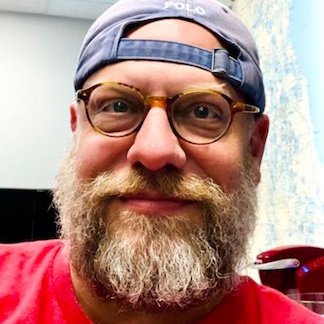I first met baseball researcher Scott Simkus a decade ago, after he had compiled the statistics for Strat-O-Matic Baseball’s 103-card Negro League legends set. I was a Strat-O-Matic fanatic in my youth, so I drove out to Simkus’s house in Carol Stream, where we played a game between the 1927 Yankees and the 1927 Dodgers, with Negro Leaguers Martin Dihigo, Oscar Charleston, Cool Papa Bell, and Satchel Paige added to the all-white teams’ rosters. (The Yankees won, 6-5, when Babe Ruth singled off Dihigo in the bottom of the ninth.)
Now, Simkus’s contribution to baseball history has gone beyond a tabletop game: he’s part of the Seamheads Negro League Database Team, which convinced Major League Baseball that the Negro Leagues belong in the same category as the American League and the National League, and should be included in baseball’s official statistical record. Last month, MLB mentioned Simkus by name in a press release announcing that it is “correcting a longtime oversight in the game’s history by officially elevating the Negro Leagues to ‘Major League’ status.”

Simkus, 50, has been researching Negro League history for two decades. His passion for Strat-O-Matic led him to the baseball shelves of the public library, where he discovered Only the Ball Was White, the pioneering history of Negro League baseball. Also, his grandfather, a sandlot player from the West Side, once played an exhibition game against the Cuban Stars, an all-Cuban team that competed in the Negro National League. Fascinated, Simkus began reading old copies of the Chicago Defender, where he found box scores for the Chicago American Giants, the city’s Negro League franchise.
“Being in Chicago, the easy team to find would be the Chicago American Giants, so it started as a Chicago-centric project,” Simkus said.
Simkus’s research became a national project once he connected online with the other Negro League investigators at Seamheads. The Negro Leagues never had an Elias Sports Bureau, so the “nerds at Seamheads” had to search newspapers for box scores, often in small towns where teams scheduled games to reach rural fans. Unlike the white leagues, whose games were confined to 16 stadiums, the Negro Leagues competed in 71 different cities. The American Giants played in Comiskey Park when the White Sox were out of town, but then they would decamp to Danville or Michigan City.
“To make a living, you had to take it on the road,” Simkus said.
Six years ago, Simkus was invited to speak about the early days of Black baseball at the National Baseball Hall of Fame in Cooperstown, N.Y. There, he met John Thorn, MLB’s official historian. When Simkus asked whether the Negro Leagues qualified for major league status, Thorn said no. It wasn’t a question of talent — there are 32 Negro League players in the Hall of Fame — but of organization and record keeping.
The Seamheads took that as a challenge. They continued “chipping away at the database,” Simkus said. This year, they finally posted statistics from the 1946 and 1947 seasons, which meant “we finally had a complete record of all 3,400-plus Negro League players.”
2020 also marked the 100th anniversary of the Negro Leagues. And it was a year of demonstrations demanding racial justice. That “convergence” of factors inspired MLB to finally recognize the Negro Leagues, Simkus believes.
Because of the difficulty of locating box scores, the Negro League Database will never be 100 percent complete. But soon, Negro League players will be given entries on baseball-reference.com, the online Baseball Almanac. They’re not going to rewrite the record books, though. Negro League seasons were only half as long as major league seasons, so the players couldn’t pile up statistics to match their white counterparts. Josh Gibson’s Hall of Fame plaque claims he hit “almost 800 home runs in league and independent play.” The Seamheads found only 238 in Negro League play. However, Gibson is expected to be awarded the record for highest single-season batting average — .441 in 1943. His lifetime average of .361 is second only to Ty Cobb’s.
One question statisticians can never fully answer is why Black athletes were excluded from Major League Baseball before World War II, especially since they starred in boxing (Joe Louis), track and field (Jesse Owens), and pro football (Fritz Pollard). Black players competed in the National League and the American Association in the 19th Century, but were banned from the majors after protests from white opponents — a ban Commissioner Kenesaw Mountain Landis did nothing to overturn.
Statisticians can, however, do the grunt work of uncovering hidden documents that correct historical wrongs. Martin Dihigo couldn’t play against Babe Ruth in Yankee Stadium, but thanks to Simkus and the other Seamheads, the two will now coexist in baseball’s record book.
